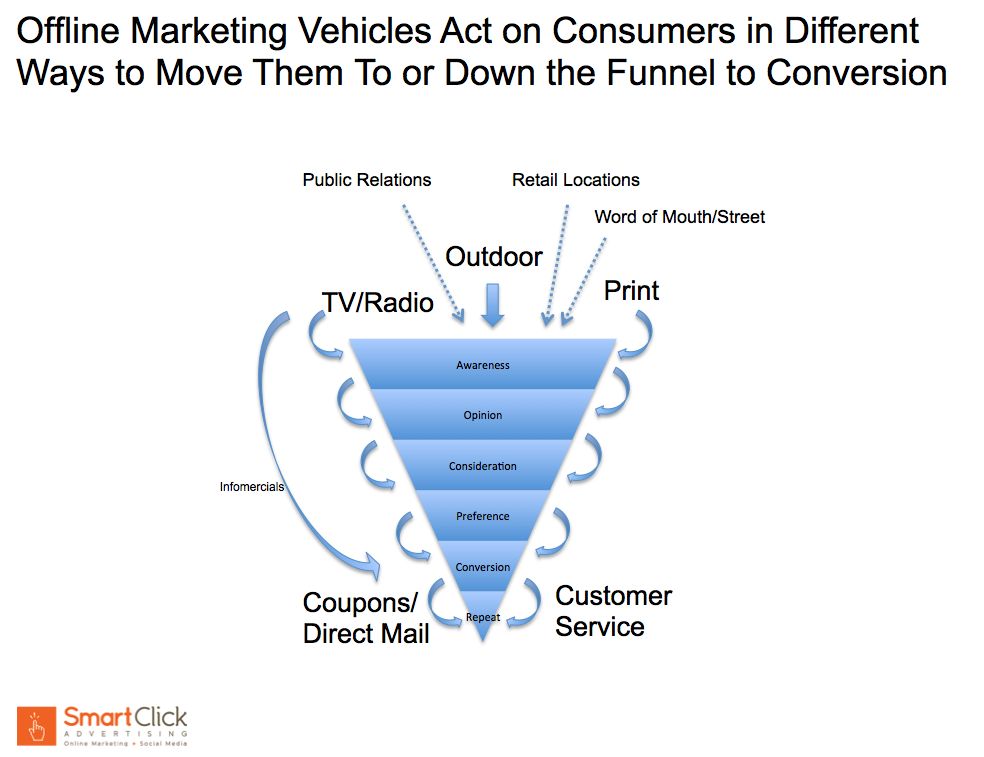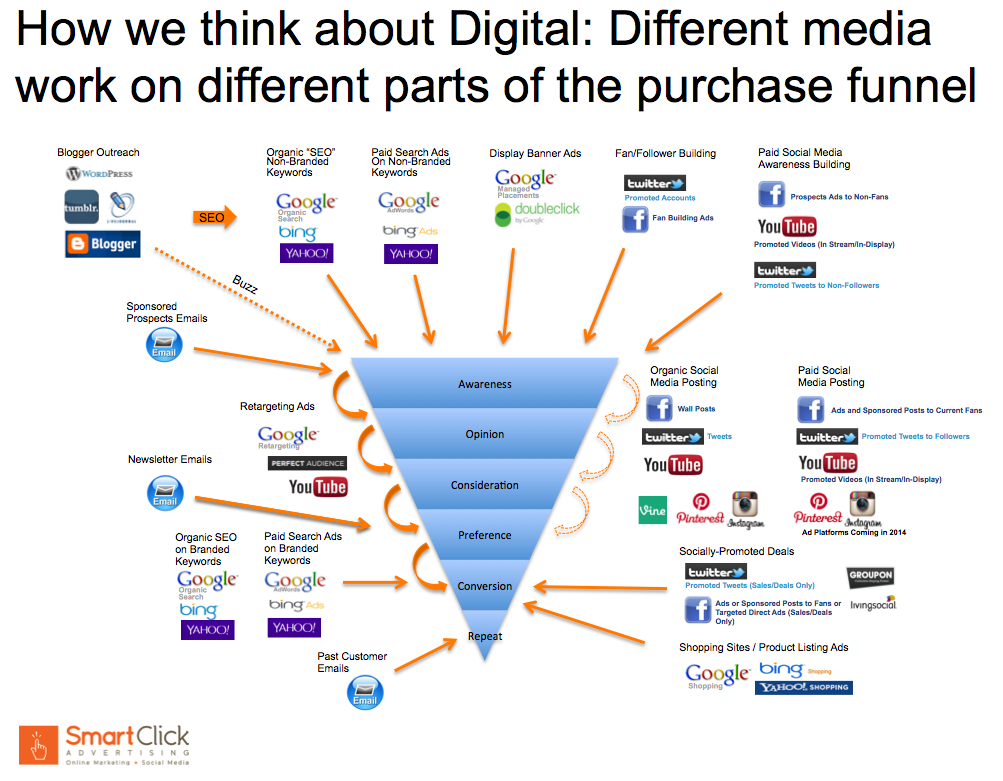Why your marketing plan didn’t work
Why Your Marketing Plan Didn’t Work
Most marketing plans lack the balance between awareness building and message frequency to truly nurture consumers down a path to purchase.
At SmartClick, when we begin a new engagement, we get a glimpse of the client’s past marketing plans. Typically, past plans haven’t worked well, or at best have been dramatically sub-optimized… after all, the client is coming to us looking for help. You might say we’ve seen an entire graveyard of online marketing plans that didn’t work. It’s spooky how we see some of the same themes repeating, over and over.
What have we learned from this ghostly graveyard of dead-on-arrival plans? It’s clear that the single most common reason a marketing plan fails (besides a bad product or website) is that the plan is myopic, only focusing on either building upstream awareness OR just driving downstream message frequency.
Building plans that drive BOTH awareness and frequency to nurture consumers at all stages of the conversion process has become a key tactic SmartClick uses to drive strong incremental results and return on investment for clients.
Awareness Generating Media
In most consumer categories, it’s a pipe dream to think that you’ll drive massive online sales from the first online ad impression. Still, that’s exactly what we see many plans trying to do while focusing only on SEO, blogs, display advertising, non-branded paid search keywords, or Facebook ads. Sure you’ll get a few conversions here or there from these types of media, but we’ve never seen a plan that focused only on awareness generators really knock it out of the park for a client. We need awareness generators in a plan, but they need to be coupled with other media that get consumers to engage more deeply with a brand.
Frequency/Repeat Building Media
Likewise, we see clients who have only focused on current customers or on customers who already know their brand. Online media like targeted emails to a database of past customers or newsletter subscribers, branded keywords on paid search, organic and paid social media posting, retargeting ads, or shopping sites like Google Shopping are great at harvesting demand that’s already there. But if you only focus on harvesting demand that’s already there, that’s going to keep you from dramatically growing your brand.
The Science Behind Multiple Exposures
Herbert Krugman, a psychologist employed by General Electric in the 1960’s Mad Men era to optimize their ad strategy with BBDO, wrote a seminal article in 1965 called “The Impact of Television Advertising: Learning without Involvement.” According to Krugman’s research, consumers have 3 levels of exposure to a message:
1. Curiosity
2. Recognition
3. Decision
We can summarize Krugman’s argument like this: on the first exposure, the ad feeds a consumer’s curiosity, that’s it. On the second exposure, an ad becomes recognizable to the consumer. It’s not until a minimum of the 3 exposures that a consumer will make a decision to buy one brand or another.
This article rocked the offline advertising world. For the first time, marketers and agencies realized that advertising needs multiple exposures in order to affect a purchase decision.
We Need to Vary Media
Advertisers later realized that, while TV was the greatest awareness builder ever invented, it was expensive, and you can’t afford to only run TV campaigns. So different media vehicles needed to be employed to either supplement or replace TV campaigns to match a client’s budgets, but still deliver results effectively. Media planners realized that different vehicles, like Magazines, PR or Outdoor for example were actually low cost proxies for the awareness-building power of TV. On the other hand, vehicles like Radio and Coupons were much better suited to plussing out the frequency of a message in support of the other vehicles and actually driving purchases. As a result, marketers in the intervening years developed many variations of a very simple model, what later became known as the sales or conversion funnel.

A New Media Framework for Online
Just as offline marketing vehicles can work in consort to move a consumer down the funnel, we can separate the ever-growing variety of online marketing vehicles into where they are best suited to move the consumer down the path to purchase. Some vehicles are awareness builders. Some are frequency builders. A successful online marketing plan will contain a good variety of both awareness building online media and frequency building online media.
At SmartClick, we’ve mapped the most comprehensive atlas of online marketing vehicles we know of and placed them where they are best suited to act on consumers along the path to conversion. We’ve also taken Krugman’s 1-2-3 points and modified them into 6 different levels within the funnel: Awareness, Opinion, Consideration, Preference, Conversion, and Repeat.

A Strategy That Guides Every Plan
When SmartClick develops a plan for a client, we always make sure we have a good variety of awareness builders, coupled with a good range of downstream frequency builders. This ensures we’ll be building more than just awareness that won’t lead to sales, or just focusing on harvesting demand that’s already there and missing the opportunity to actually build a brand.
As we’re exploring the brave new world of conversion attribution modeling, we can now actually see what Krugman and the Mad Men only theorized. The clickstream we can see with sophisticated attribution tools or even Google Analytics shows that depending on the category, a consumer will touch a brand anywhere from 5-200 times before a conversion takes place. This depends a lot on the purchase cycle and frequency. If it takes that many clicks to drive a conversion, then of course the diversity of media driving that clickstream leading to a conversion or purchase is critical.
A diversified plan isn’t cheap. It isn’t easy to execute. But at the same time, developing a diversified, balanced plan that touches the consumer at all points along the path to conversion is one of the core ways SmartClick gets great results for clients.









No Comments